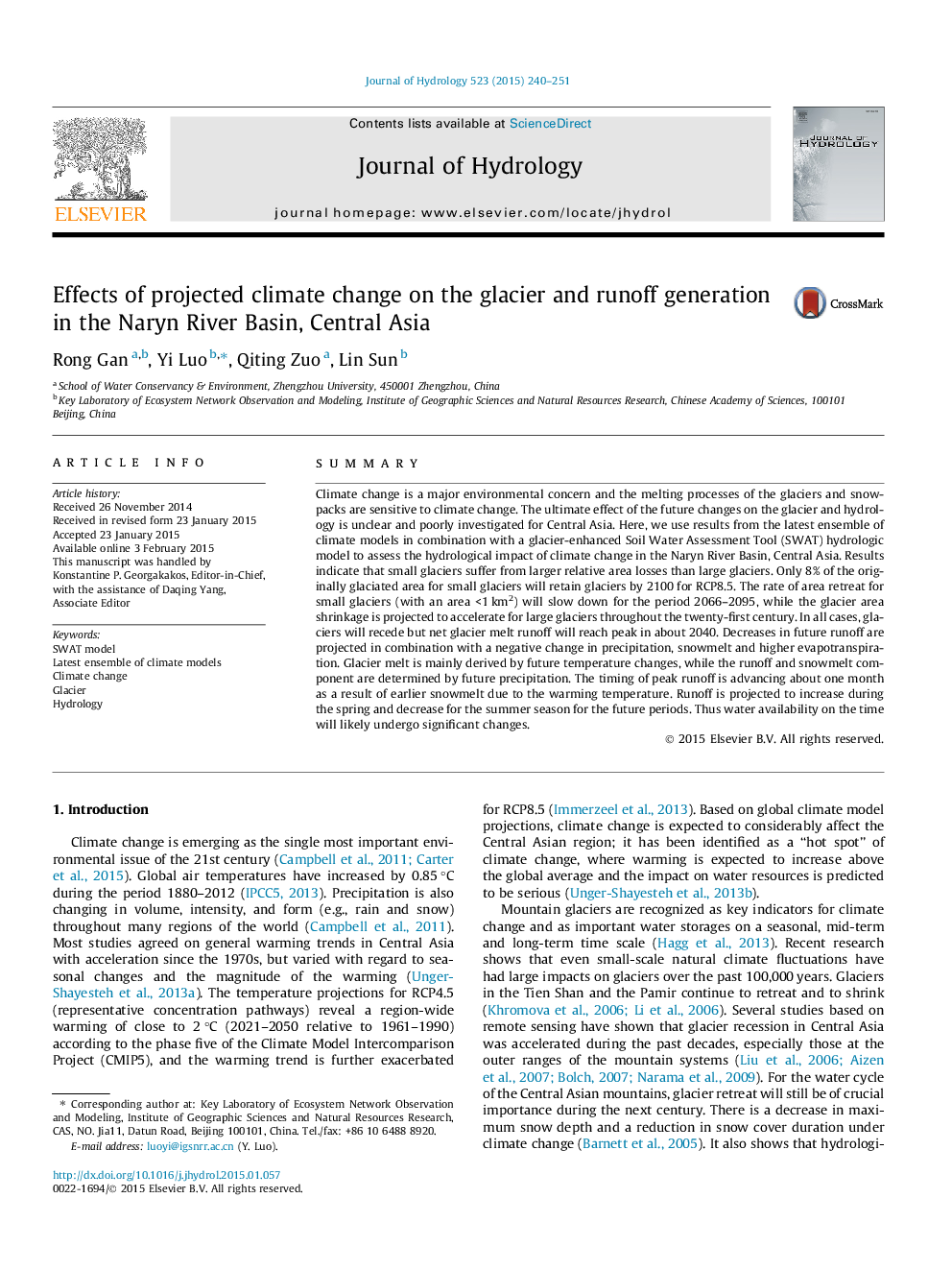| کد مقاله | کد نشریه | سال انتشار | مقاله انگلیسی | نسخه تمام متن |
|---|---|---|---|---|
| 6411675 | 1629927 | 2015 | 12 صفحه PDF | دانلود رایگان |
- We use the glacier-enhanced model with the latest ensemble of climate models.
- Shrinkage for small glacier will slow down, while the large ones will accelerate.
- Glaciers will recede but net glacier melt runoff will reach peak in about 2040.
- Glacier change is derived by temperature and runoff is determined by precipitation.
- Runoff is projected to increase during the spring and decrease for the summer.
SummaryClimate change is a major environmental concern and the melting processes of the glaciers and snowpacks are sensitive to climate change. The ultimate effect of the future changes on the glacier and hydrology is unclear and poorly investigated for Central Asia. Here, we use results from the latest ensemble of climate models in combination with a glacier-enhanced Soil Water Assessment Tool (SWAT) hydrologic model to assess the hydrological impact of climate change in the Naryn River Basin, Central Asia. Results indicate that small glaciers suffer from larger relative area losses than large glaciers. Only 8% of the originally glaciated area for small glaciers will retain glaciers by 2100 for RCP8.5. The rate of area retreat for small glaciers (with an area <1Â km2) will slow down for the period 2066-2095, while the glacier area shrinkage is projected to accelerate for large glaciers throughout the twenty-first century. In all cases, glaciers will recede but net glacier melt runoff will reach peak in about 2040. Decreases in future runoff are projected in combination with a negative change in precipitation, snowmelt and higher evapotranspiration. Glacier melt is mainly derived by future temperature changes, while the runoff and snowmelt component are determined by future precipitation. The timing of peak runoff is advancing about one month as a result of earlier snowmelt due to the warming temperature. Runoff is projected to increase during the spring and decrease for the summer season for the future periods. Thus water availability on the time will likely undergo significant changes.
Journal: Journal of Hydrology - Volume 523, April 2015, Pages 240-251
